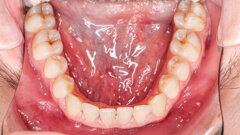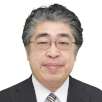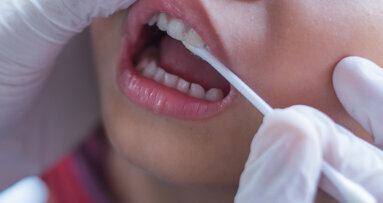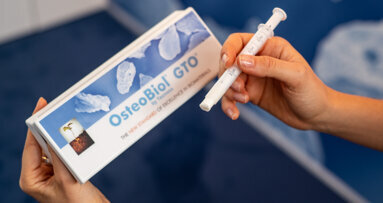NEW YORK, U.S.: According to the Autism Society of America, more than 3.5 million Americans have some form of autism spectrum disorder. With prevalence of the disorder reportedly increasing by 6–15 percent annually over the period of 2002–2010, the need for early detection is critical. In a new study, researchers have found that a close examination of primary dentition may help with this and give an insight into the origin of the disorder.
Speaking to Dental Tribune Online, senior author of the study Dr. Manish Arora, Professor of Dentistry and of Environmental Medicine and Public Health at the Icahn School of Medicine at Mount Sinai, New York, U.S., said: “We had undertaken a study in 2016 on twins living in Sweden and found that metal uptake was different in the sibling affected by autism spectrum disorder. The strongest signal was for zinc, which was lower in the affected twin. Interestingly, this only persisted in the third trimester and for a few weeks after birth.”
For the current study, the team of researchers set out to develop an algorithm through the replication of their findings from 2016 to help with early detection. Focusing on four populations, two in the U.S. and one in the U.K., and cross-referencing them to the Swedish study, Arora and his colleagues found that it was not the concentration of metals that was the difference, but rather the rhythms of the cyclic processes underlying the metabolism of the metals that were being disrupted.
By employing two distinct classification models that used metal rhythmicity data, the researchers were then able to achieve 90 percent accuracy in classifying cases and controls, with sensitivity to autism spectrum disorder diagnosis ranging from 85 to 100 percent and specificity from 90 to 100 percent. However, despite the positive results, Arora was quick to point out that there is still a great deal of development required before any concrete markers can be set.
“The algorithm that we developed uses metal uptake signatures from the prenatal and early childhood periods to identify those health trajectories that are leading to an autism diagnosis later in life. This is not a diagnostic test, but it is a first step toward one.”
The study, titled “Dynamical features in fetal and postnatal zinc-copper metabolic cycles predict the emergence of autism spectrum disorder,” was published online in Science Advances on May 30.
Tags:
NEW YORK, USA: Evidence found in primary dentition has suggested that exposure to specific toxins and nutrients is associated with the risk of developing ...
BANBURY, England: Traditional toothpaste tubes present environmental and practical challenges because they are often excluded from standard recycling ...
HELSINKI, Finland: Digitalisation is changing industries throughout the world. With a growing demand for innovative digital solutions, new technology is ...
LAHORE, Pakistan: Because treating periodontal disease requires a nuanced approach, a means of predicting the most likely treatment requirements could help ...
DUBAI, UAE: For individuals with autism, a trip to the dentist poses a range of serious challenges, which can include sensory overstimulation, departure ...
COLOGNE, Germany: Whereas caries in adults and adolescents in Germany is declining, research has found that about 14 per cent of 3-year-olds in the country ...
MUNICH, Germany: Molar incisor hypomineralisation (MIH) constitutes a global oral health issue, affecting around 14% of the world’s population. Like with ...
ANN ARBOR, Mich., US: As the number of dental implants placed globally continues to rise, so too does the clinical significance of understanding ...
LISBON, Portugal: At the beginning of this year, Tecnoss, a leading biomaterials manufacturer based in Italy, launched a new bone substitute which combines ...
HONG KONG: Autism spectrum disorder (ASD) is a global public health concern. Early identification and timely support for children with ASD can significantly...
Live webinar
Mon. 12 January 2026
9:00 am EST (New York)
Prof. Judith Jones D.D.S; M.P.H., Prof. Kakuhiro Fukai D.D.S., Ph.D, Dr. Bathsheba (Bethy) Turton
Live webinar
Wed. 14 January 2026
12:00 pm EST (New York)
Dr. Théo Laplane, Dr. Robert Gottlander DDS
Live webinar
Fri. 16 January 2026
12:00 pm EST (New York)
Live webinar
Mon. 19 January 2026
1:00 pm EST (New York)
Philipp Kopp, Michael Seeber
Live webinar
Thu. 22 January 2026
2:00 pm EST (New York)
Dr. Nicola M. Grande DDS, PhD
Live webinar
Wed. 28 January 2026
8:00 am EST (New York)
Live webinar
Wed. 28 January 2026
11:00 am EST (New York)
Prof. Dr. Jan-Frederik Güth



 Austria / Österreich
Austria / Österreich
 Bosnia and Herzegovina / Босна и Херцеговина
Bosnia and Herzegovina / Босна и Херцеговина
 Bulgaria / България
Bulgaria / България
 Croatia / Hrvatska
Croatia / Hrvatska
 Czech Republic & Slovakia / Česká republika & Slovensko
Czech Republic & Slovakia / Česká republika & Slovensko
 France / France
France / France
 Germany / Deutschland
Germany / Deutschland
 Greece / ΕΛΛΑΔΑ
Greece / ΕΛΛΑΔΑ
 Hungary / Hungary
Hungary / Hungary
 Italy / Italia
Italy / Italia
 Netherlands / Nederland
Netherlands / Nederland
 Nordic / Nordic
Nordic / Nordic
 Poland / Polska
Poland / Polska
 Portugal / Portugal
Portugal / Portugal
 Romania & Moldova / România & Moldova
Romania & Moldova / România & Moldova
 Slovenia / Slovenija
Slovenia / Slovenija
 Serbia & Montenegro / Србија и Црна Гора
Serbia & Montenegro / Србија и Црна Гора
 Spain / España
Spain / España
 Switzerland / Schweiz
Switzerland / Schweiz
 Turkey / Türkiye
Turkey / Türkiye
 UK & Ireland / UK & Ireland
UK & Ireland / UK & Ireland
 Brazil / Brasil
Brazil / Brasil
 Canada / Canada
Canada / Canada
 Latin America / Latinoamérica
Latin America / Latinoamérica
 USA / USA
USA / USA
 China / 中国
China / 中国
 India / भारत गणराज्य
India / भारत गणराज्य
 Pakistan / Pākistān
Pakistan / Pākistān
 Vietnam / Việt Nam
Vietnam / Việt Nam
 ASEAN / ASEAN
ASEAN / ASEAN
 Israel / מְדִינַת יִשְׂרָאֵל
Israel / מְדִינַת יִשְׂרָאֵל
 Algeria, Morocco & Tunisia / الجزائر والمغرب وتونس
Algeria, Morocco & Tunisia / الجزائر والمغرب وتونس
 Middle East / Middle East
Middle East / Middle East
















































To post a reply please login or register